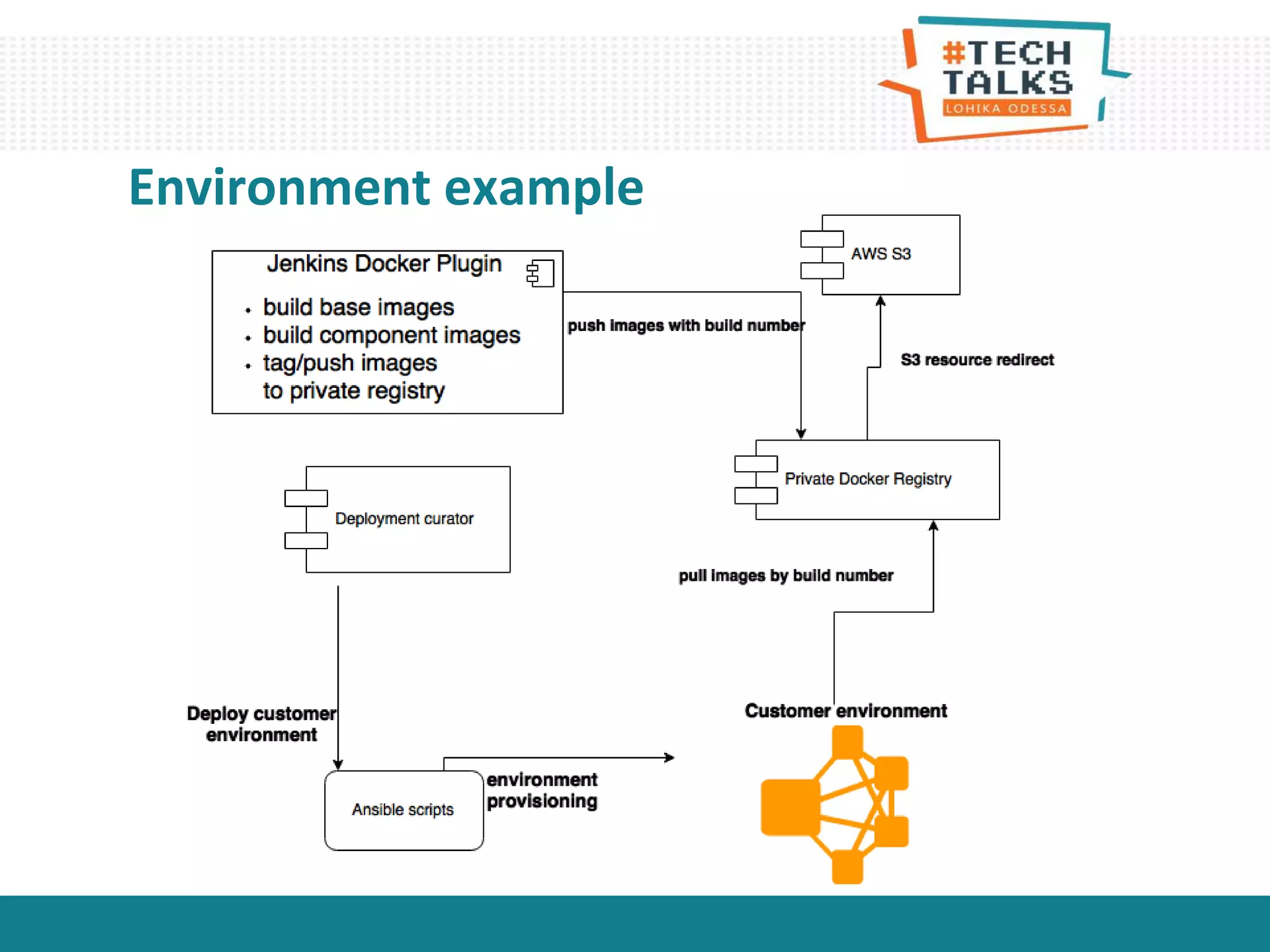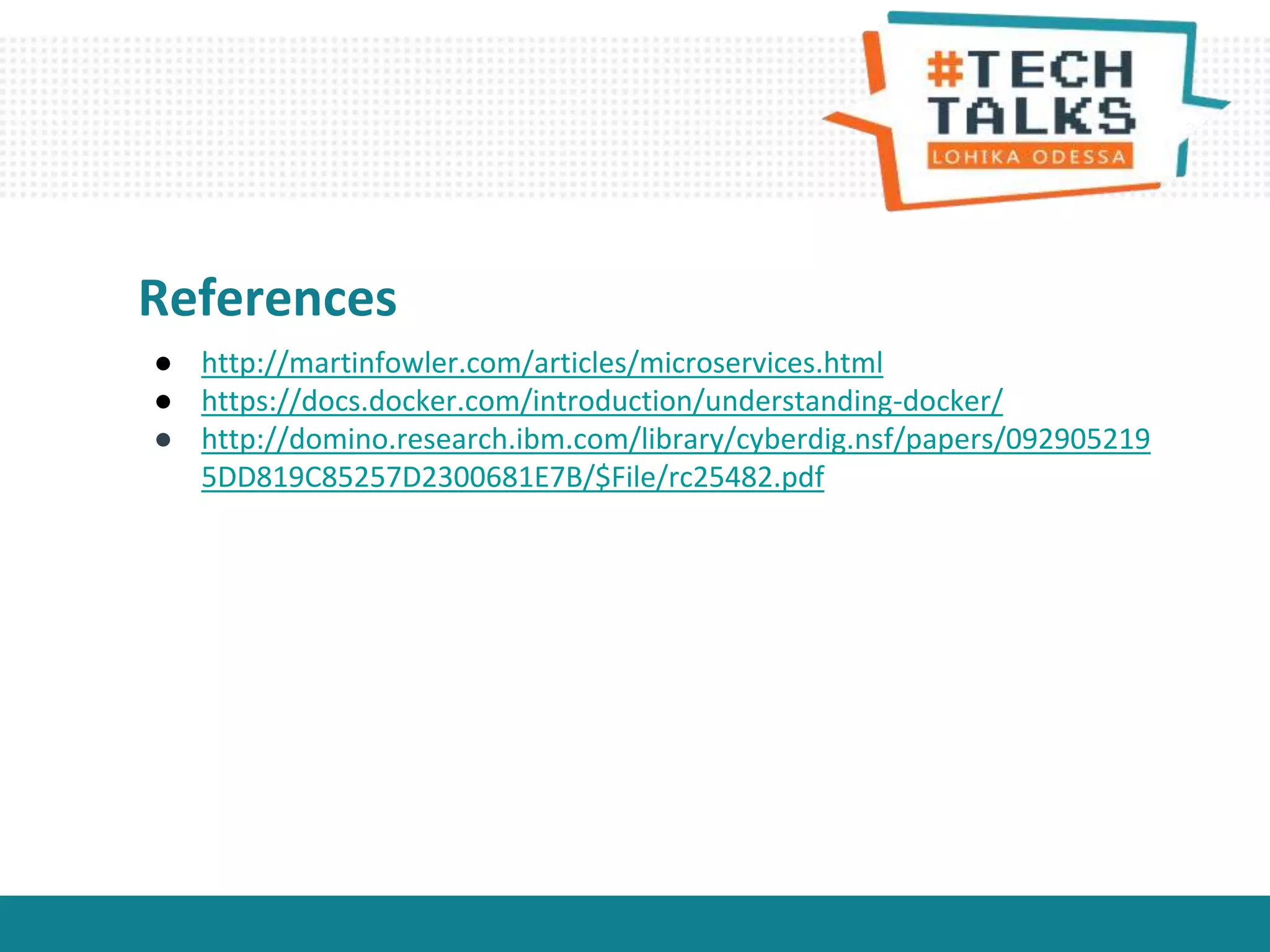This document discusses Docker and microservices architecture. It provides an overview of Docker concepts like containers, images, and the Docker ecosystem. It also covers microservices concepts like decomposition, independent deployment, and benefits/drawbacks. Additionally, it discusses common microservices deployment patterns like single instance per host/VM/container and Docker usage scenarios like building images and running containers.
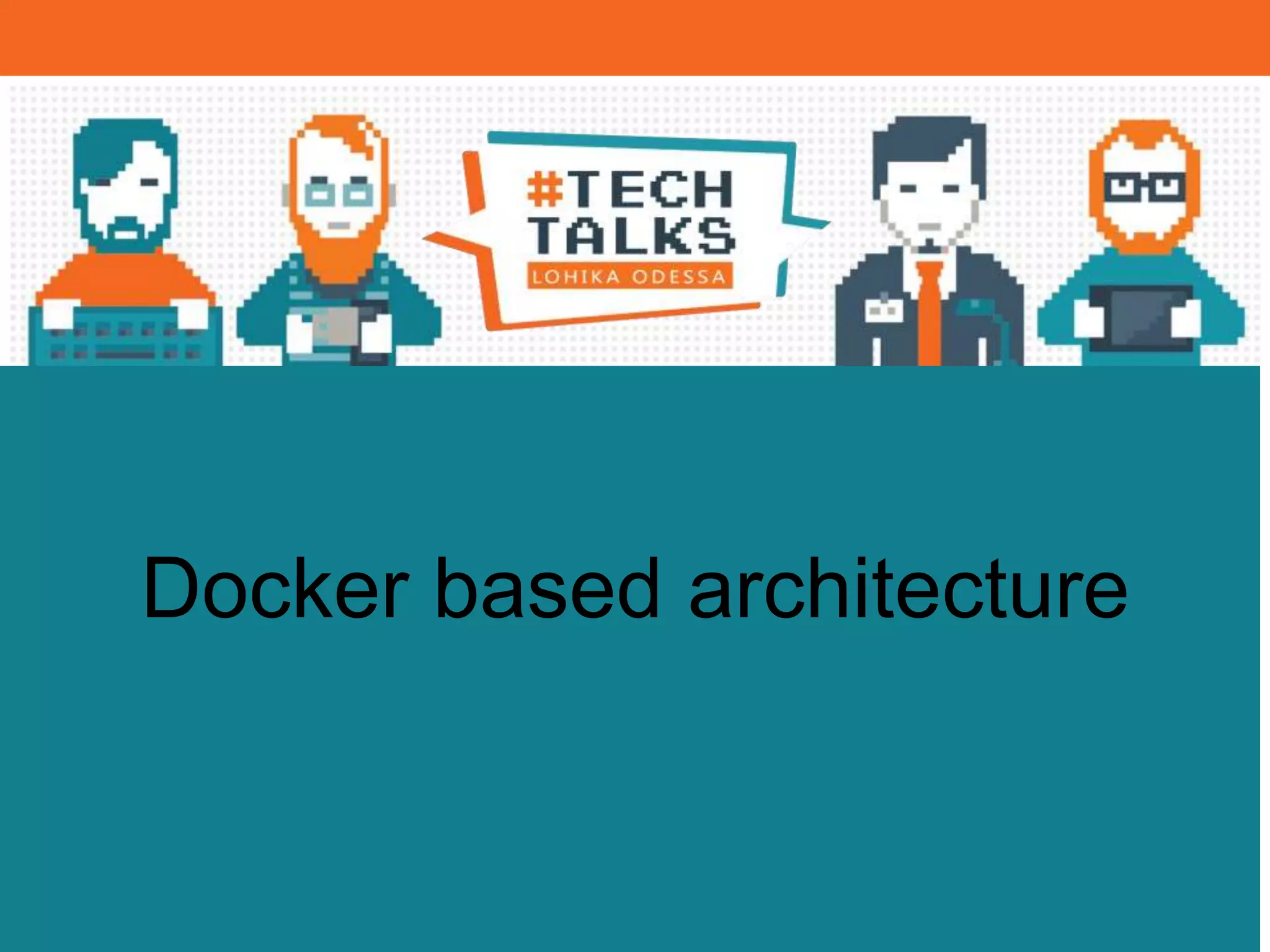
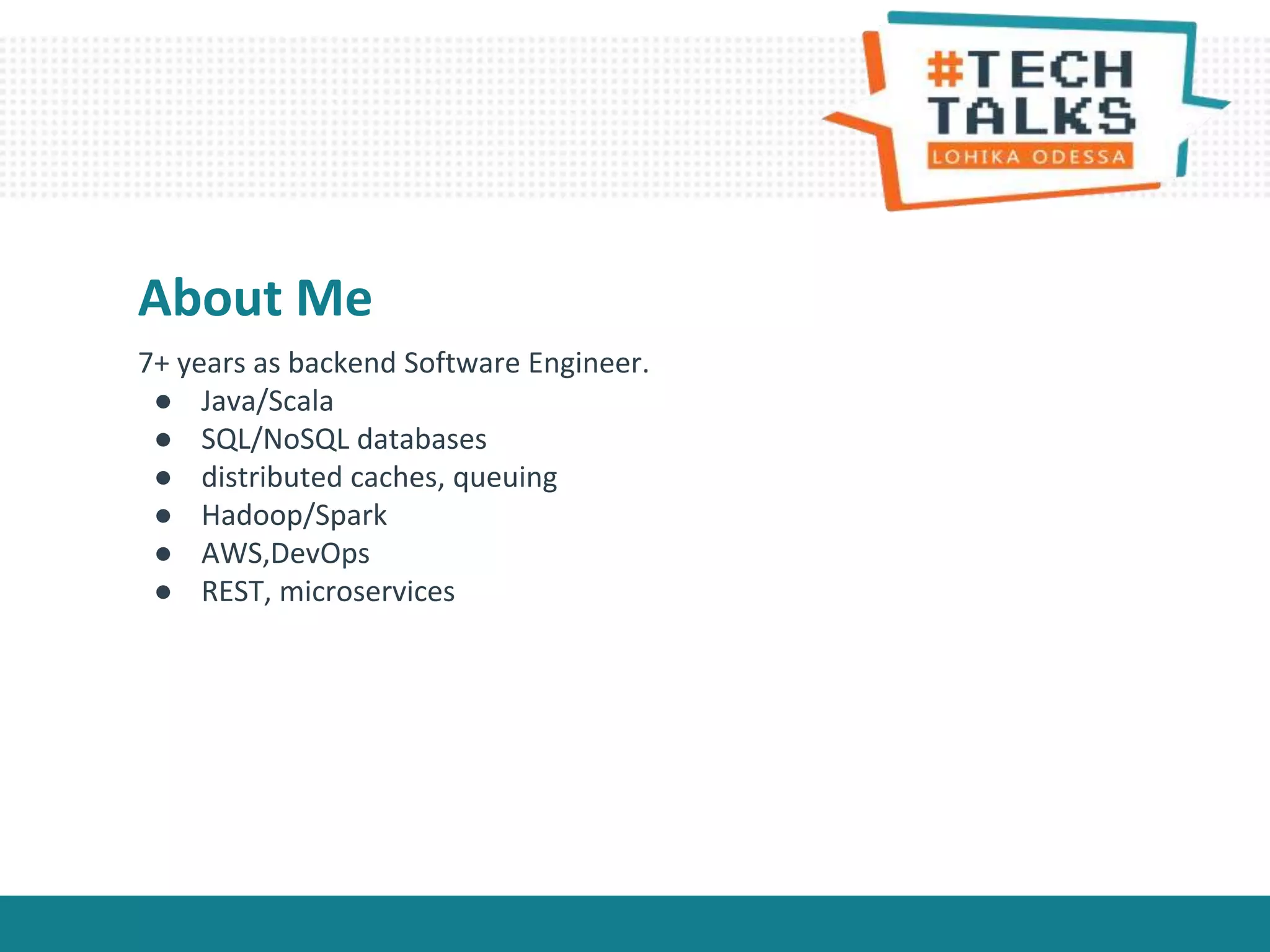
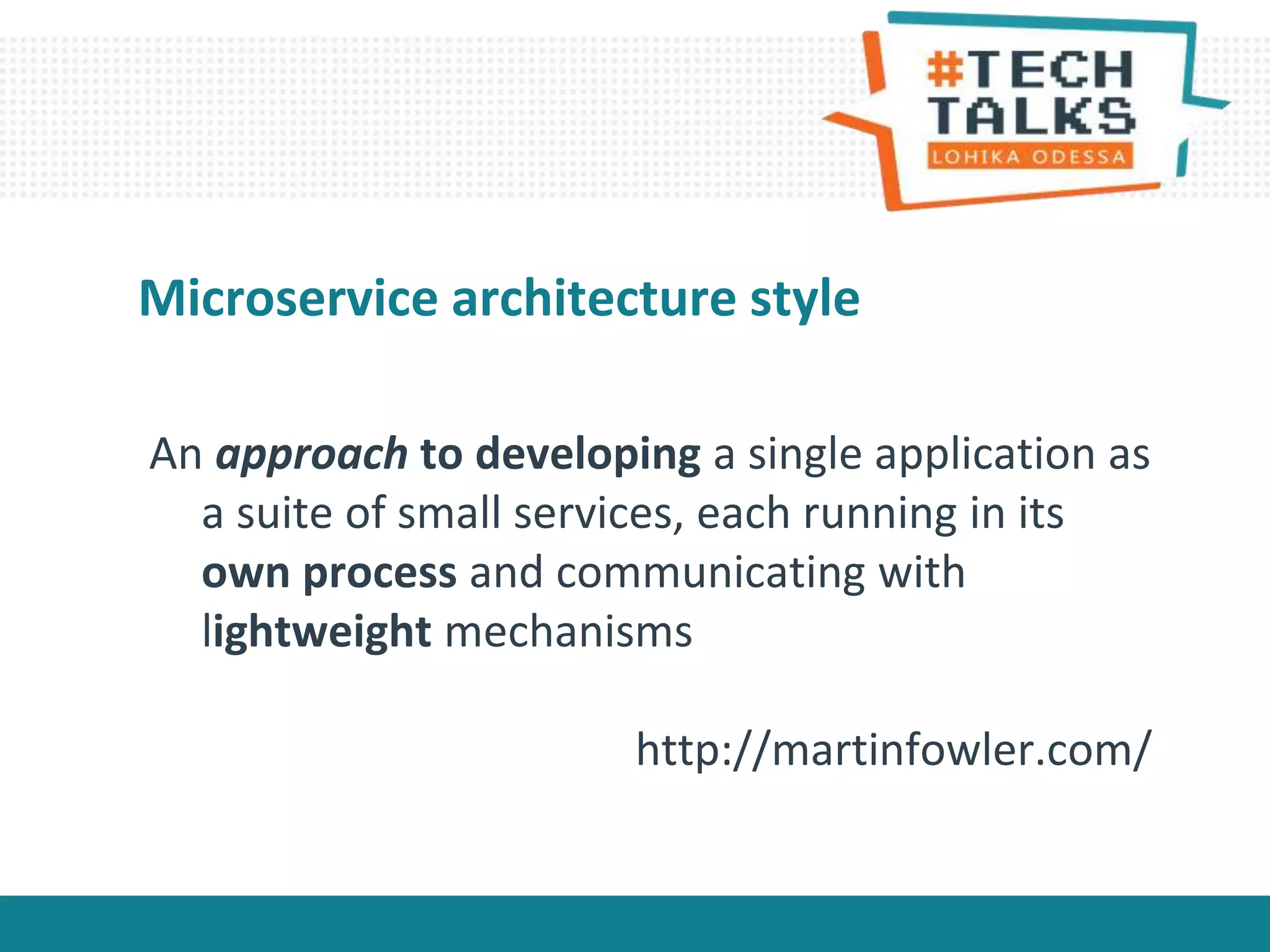
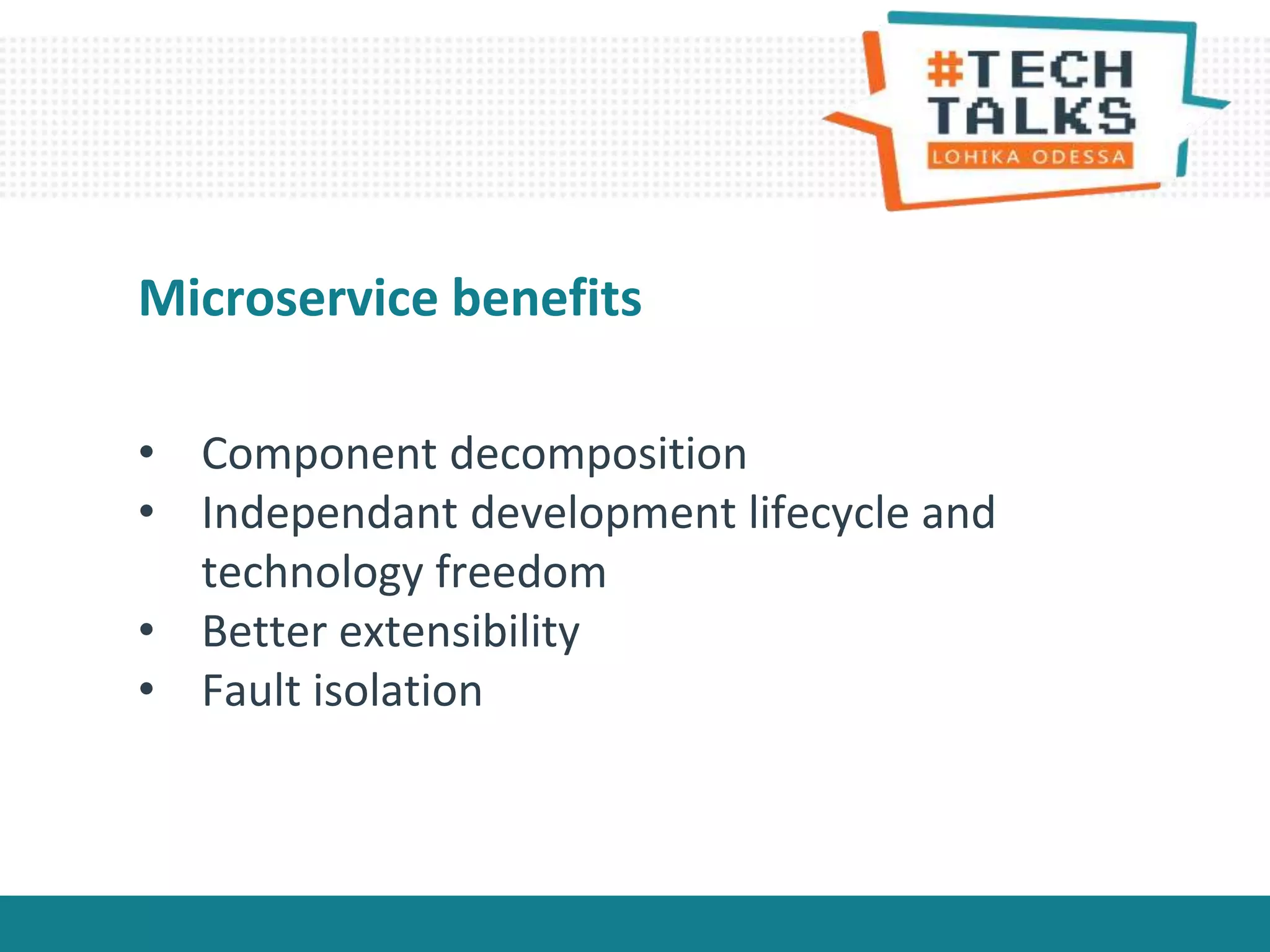
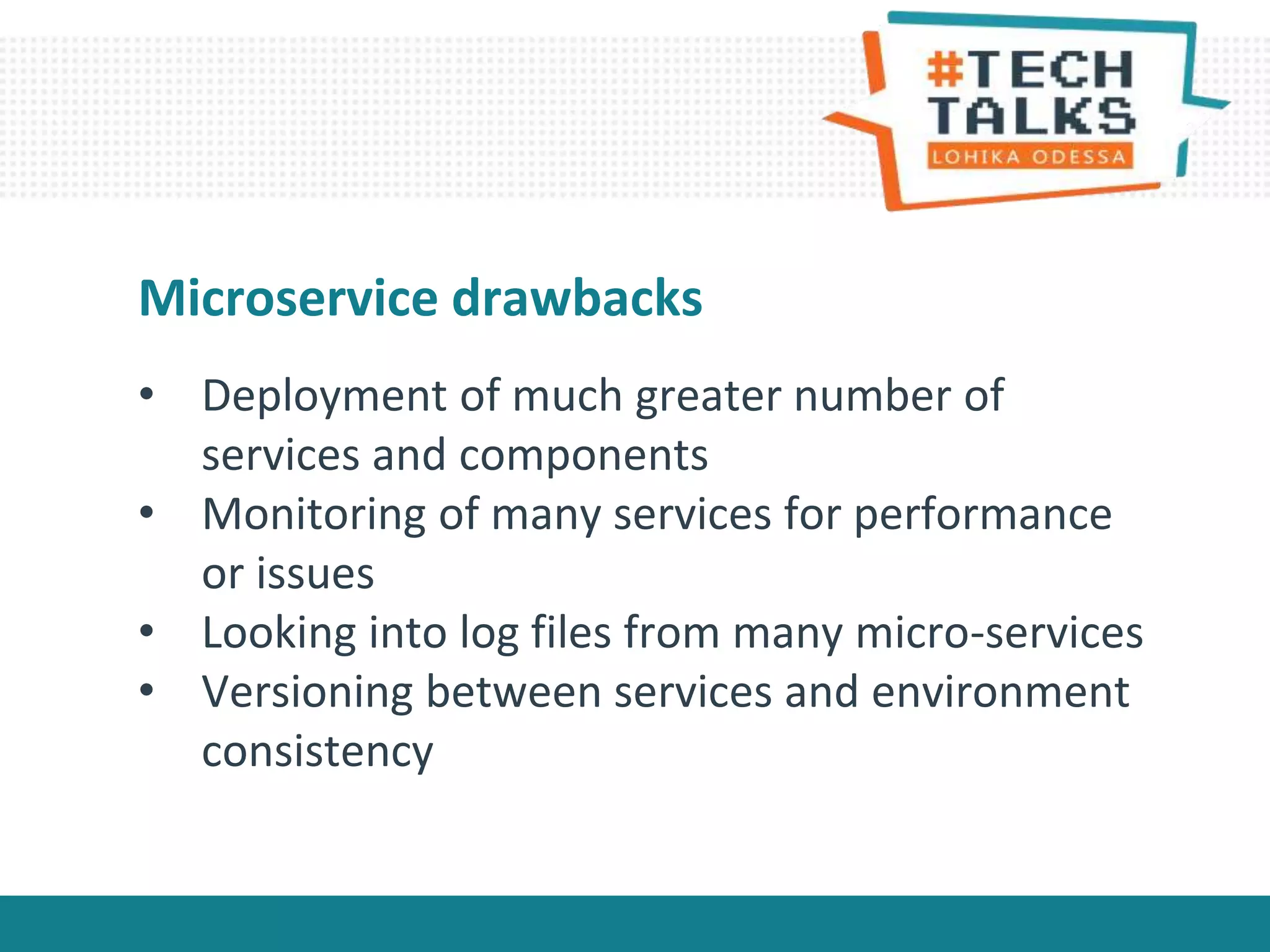
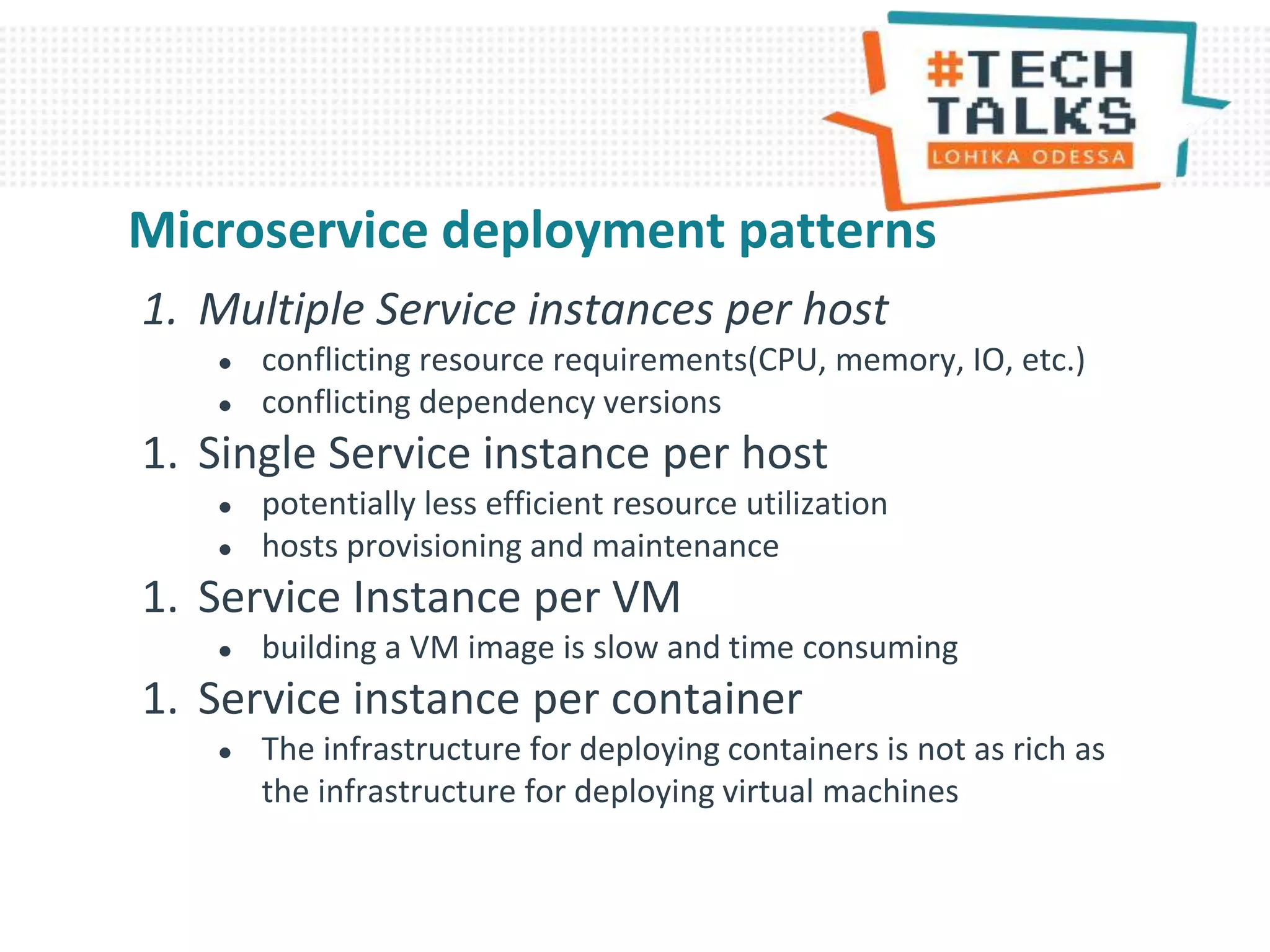
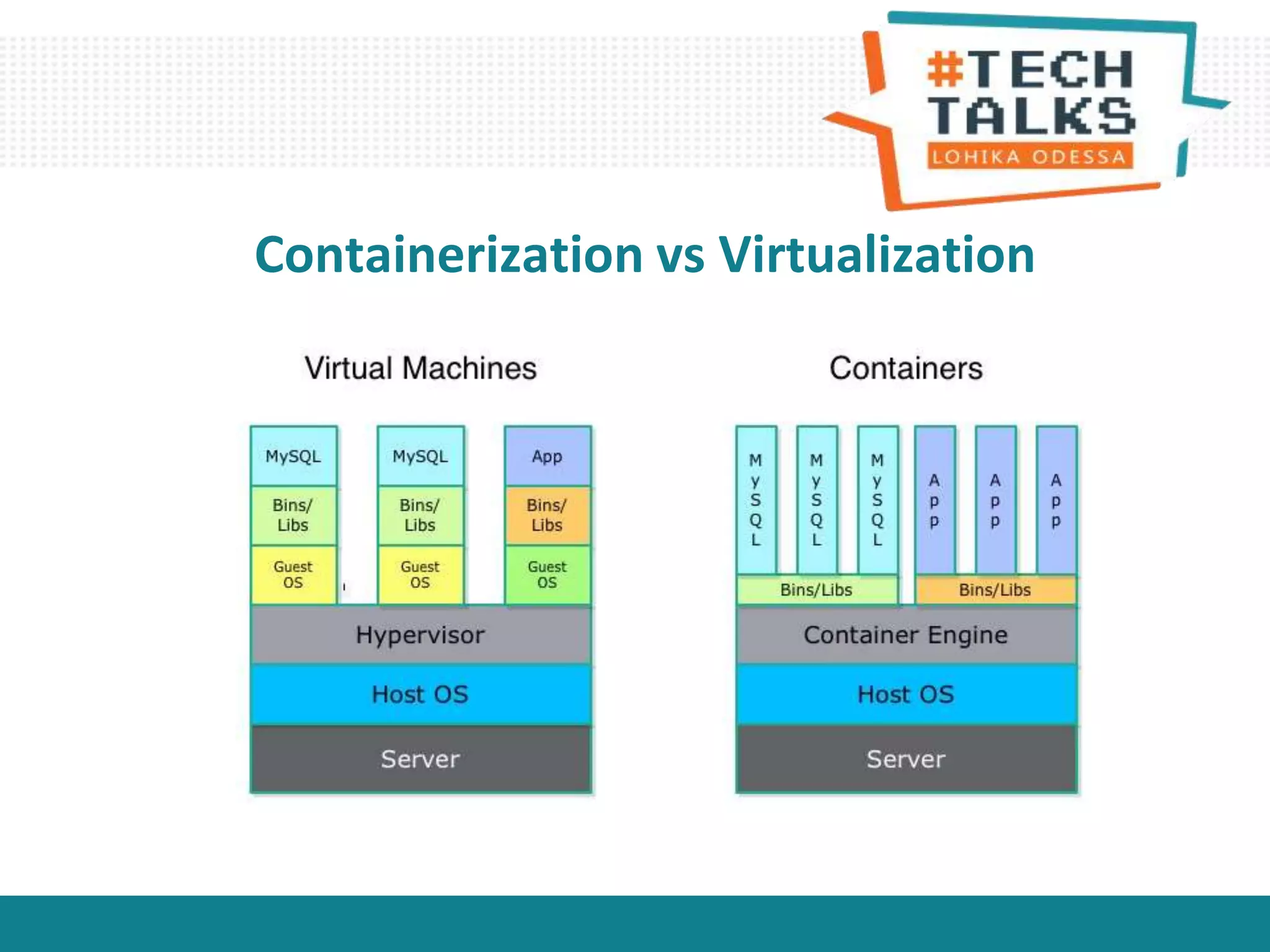

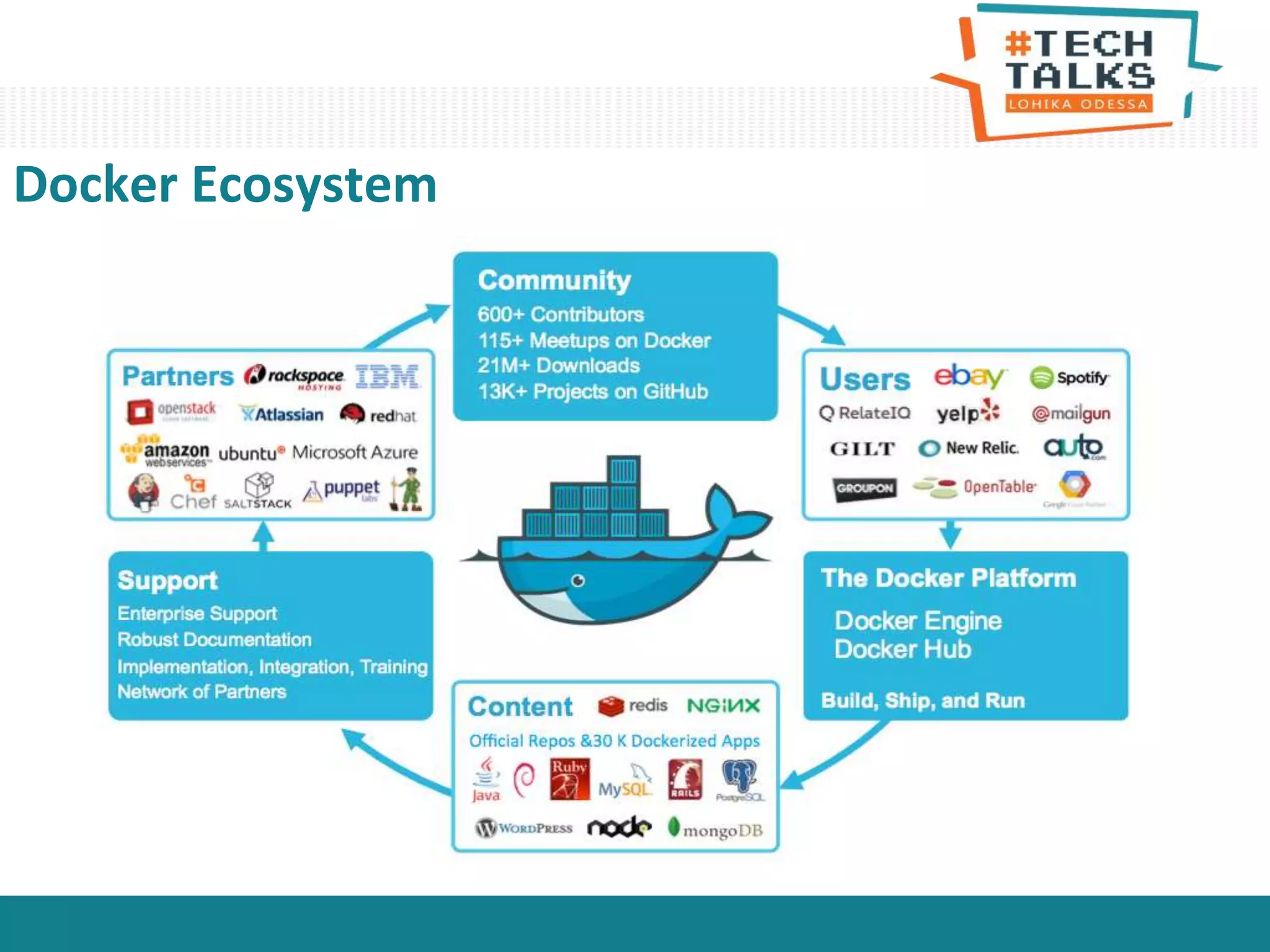
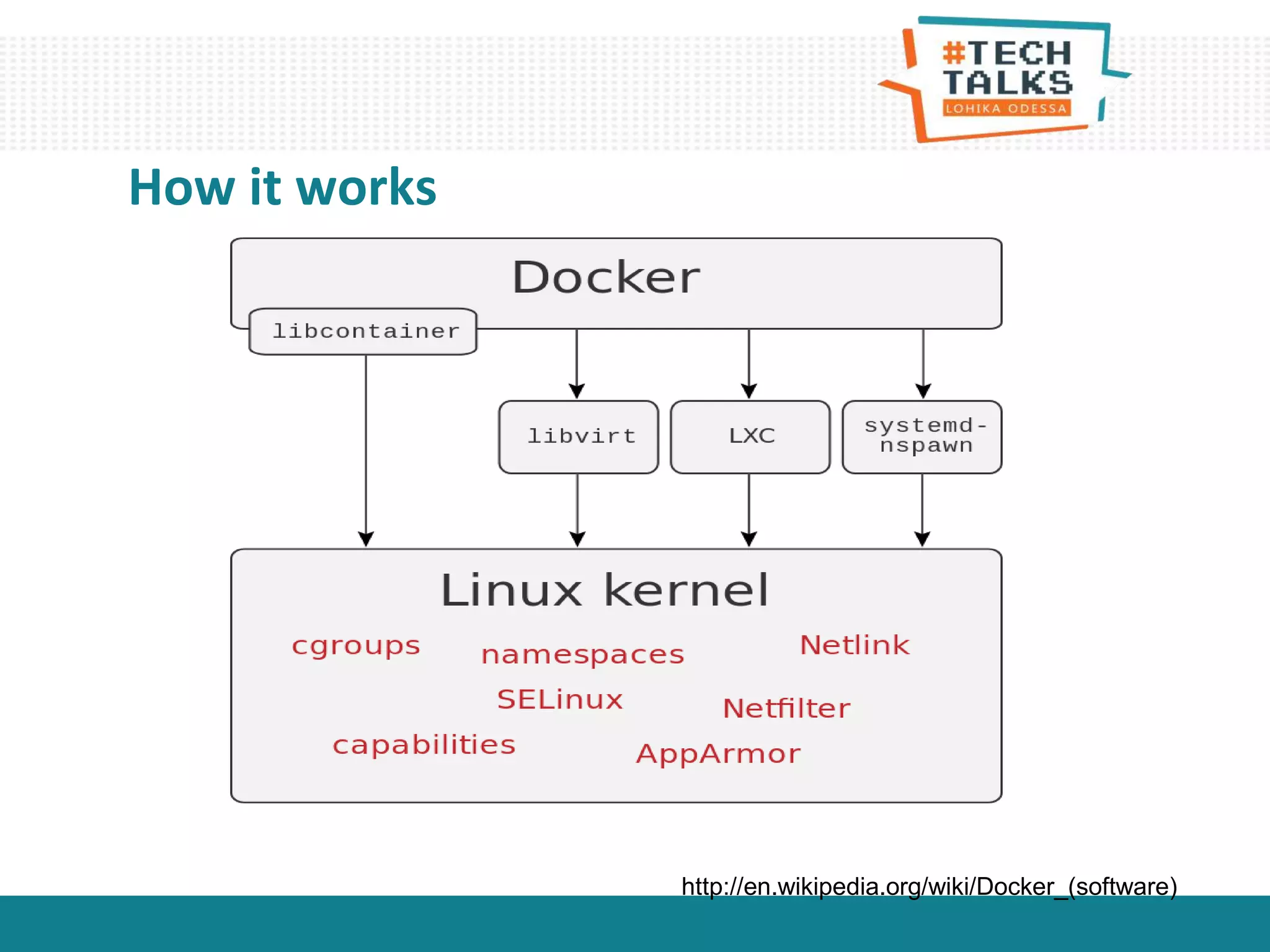
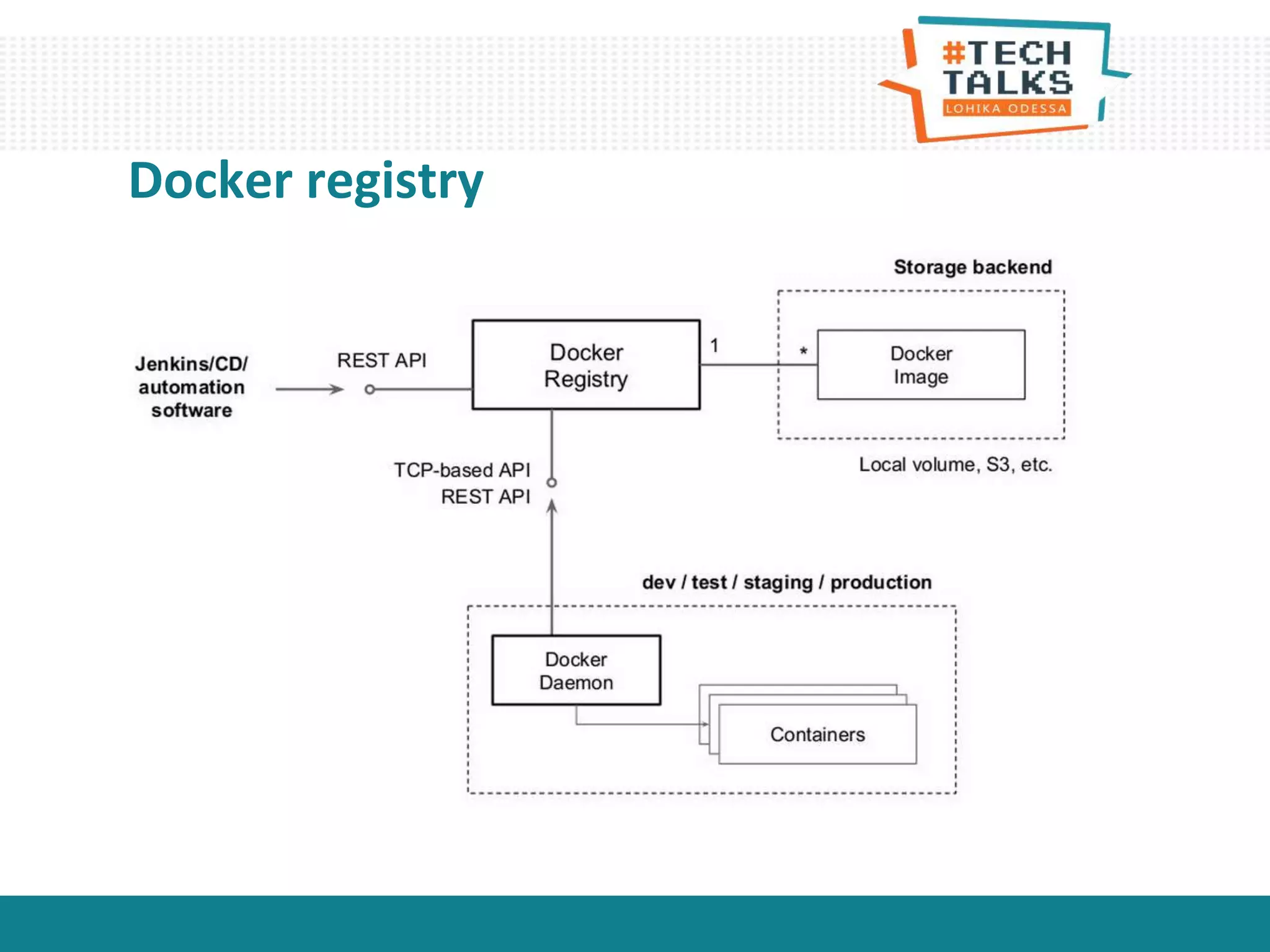
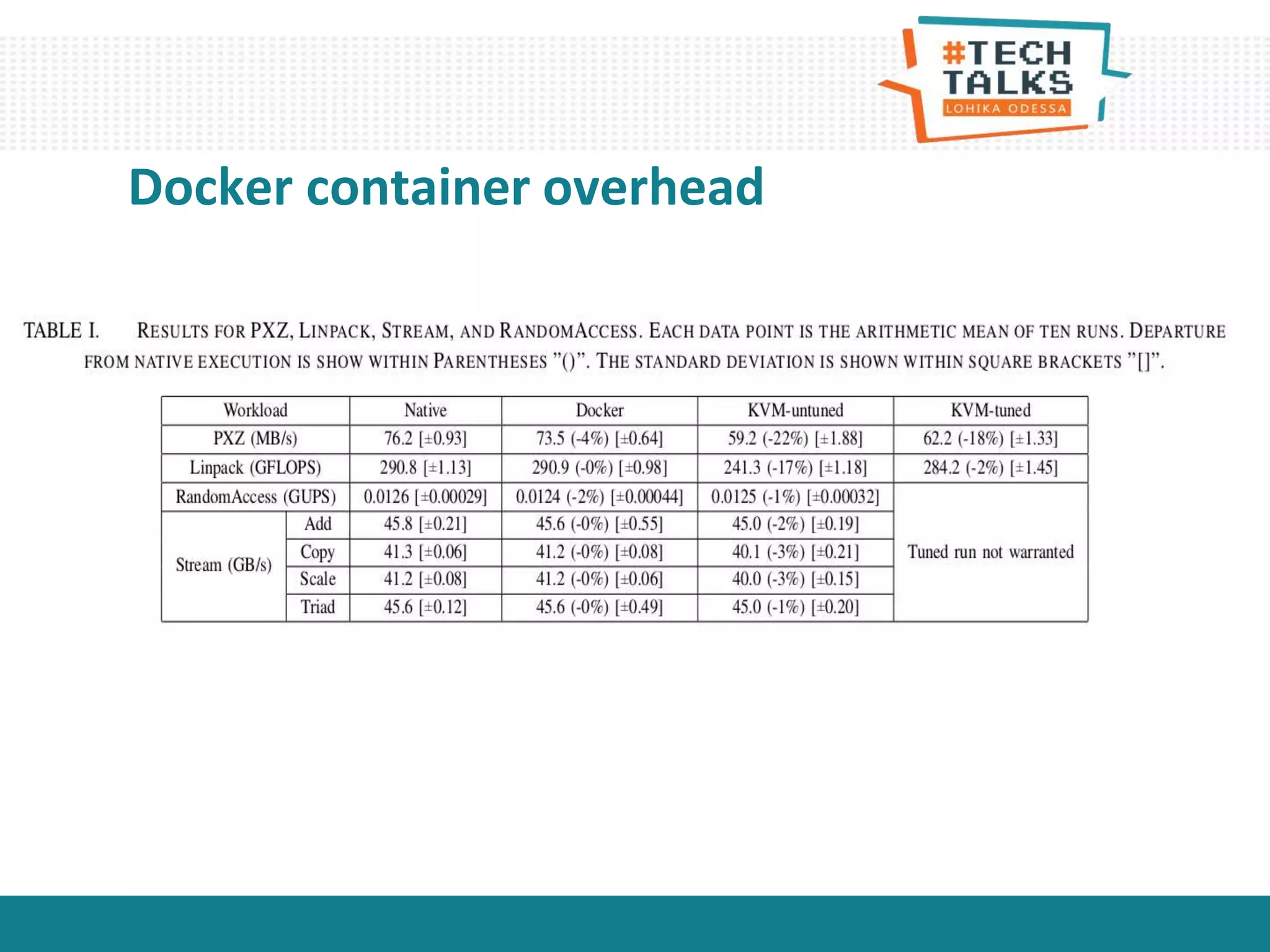
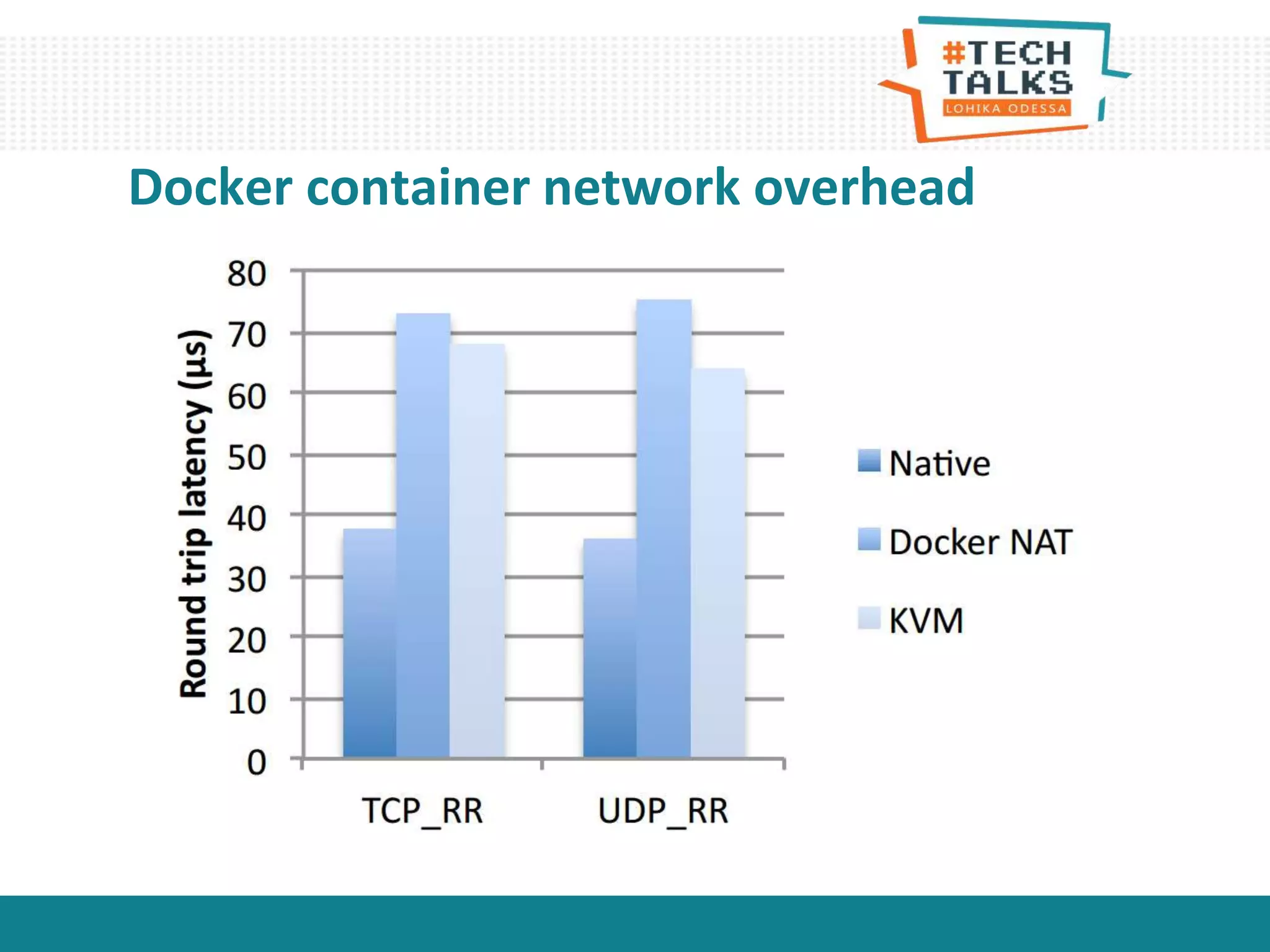
![Basic docker usage scenario
1. create Dockerfile
2. build image with specific name in format
[registry_url/]repository:imageTag , e.g
myhost:5000/mycompany/myservice:version1
1. push image into registry (private or Docker Hub)
2. pull image by repository and tag (Optional)
3. run container from image](https://image.slidesharecdn.com/dockerpresentation1-150723080509-lva1-app6892/75/Docker-based-Architecture-by-Denys-Serdiuk-14-2048.jpg)
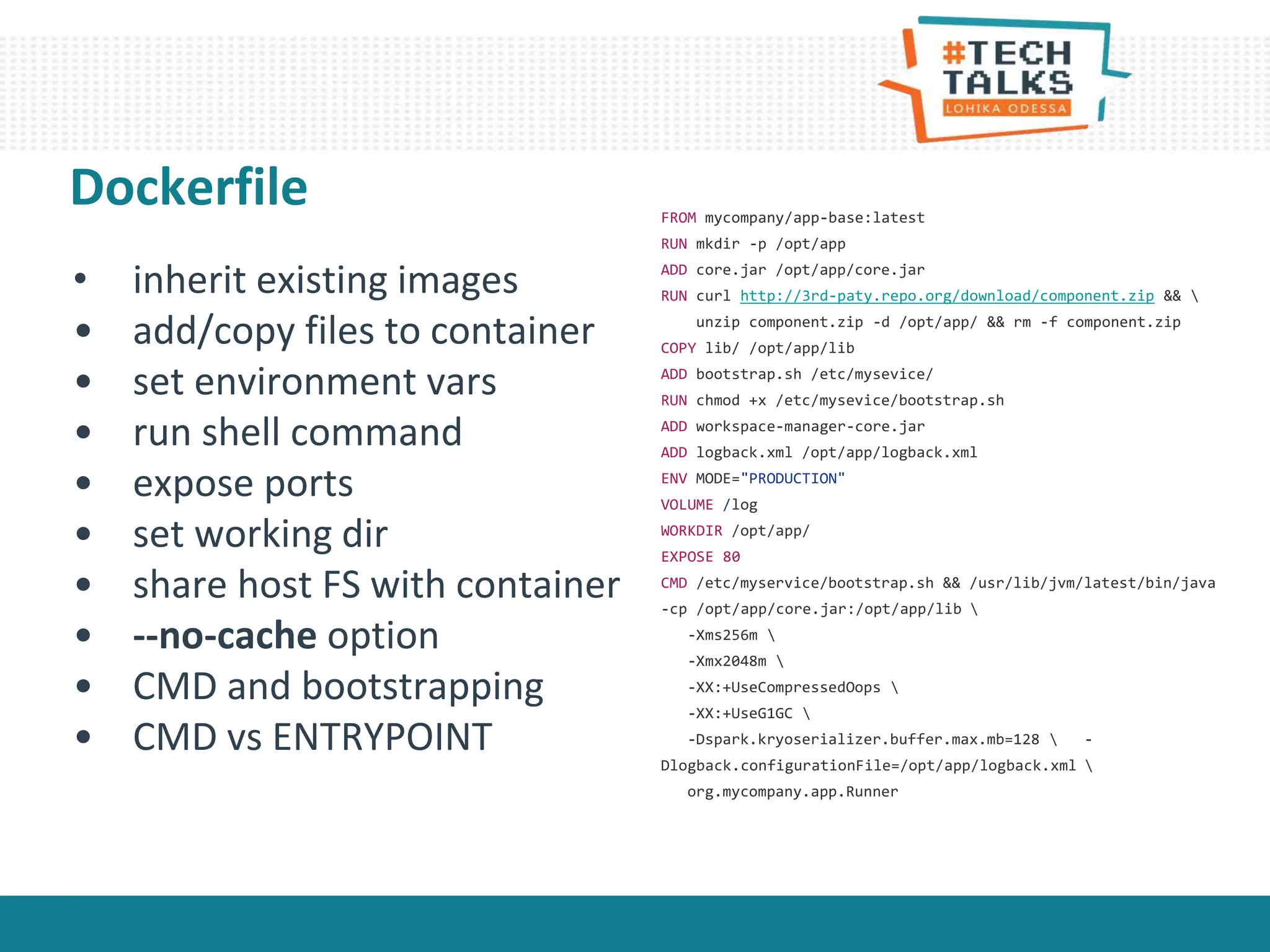
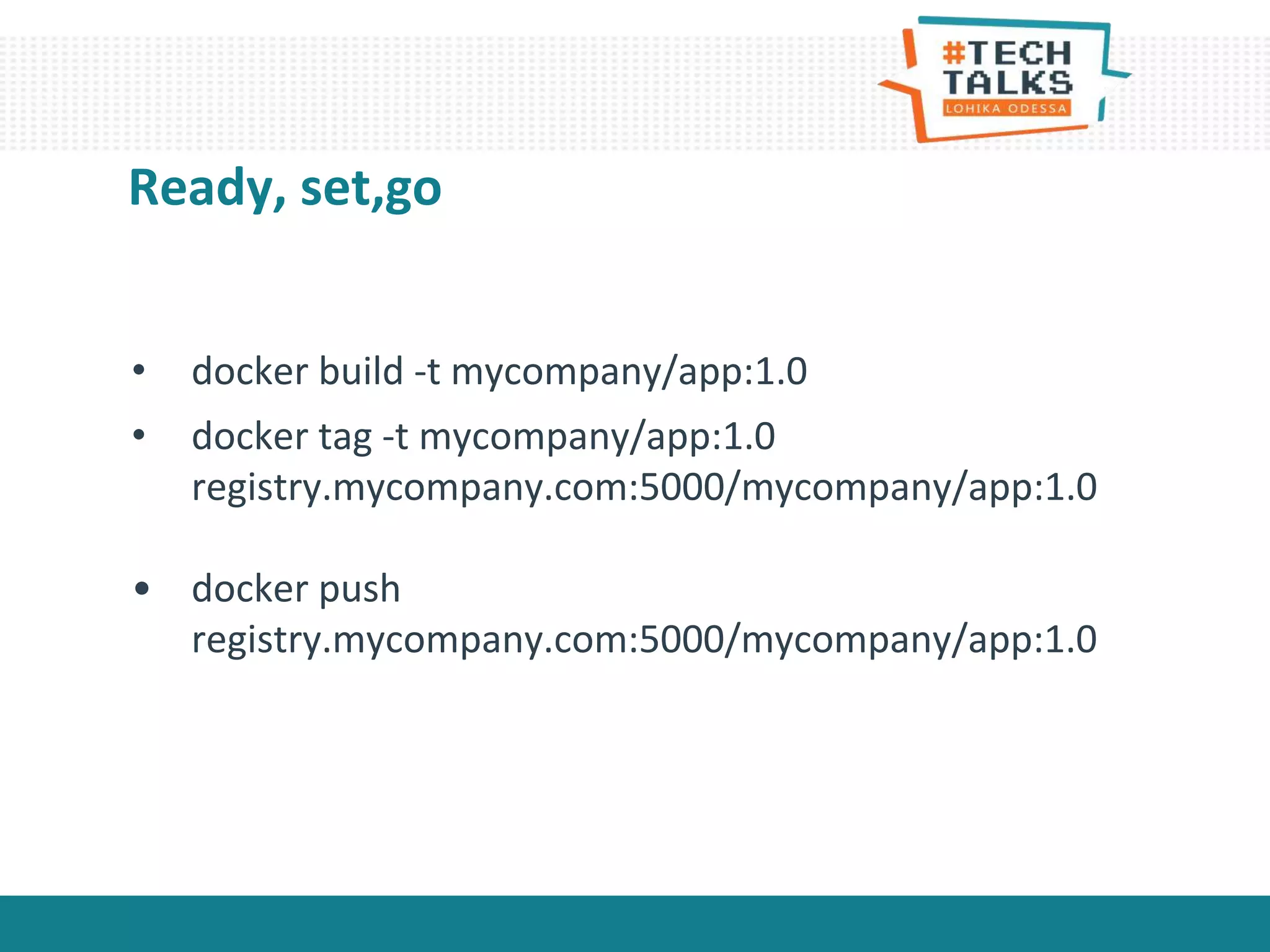
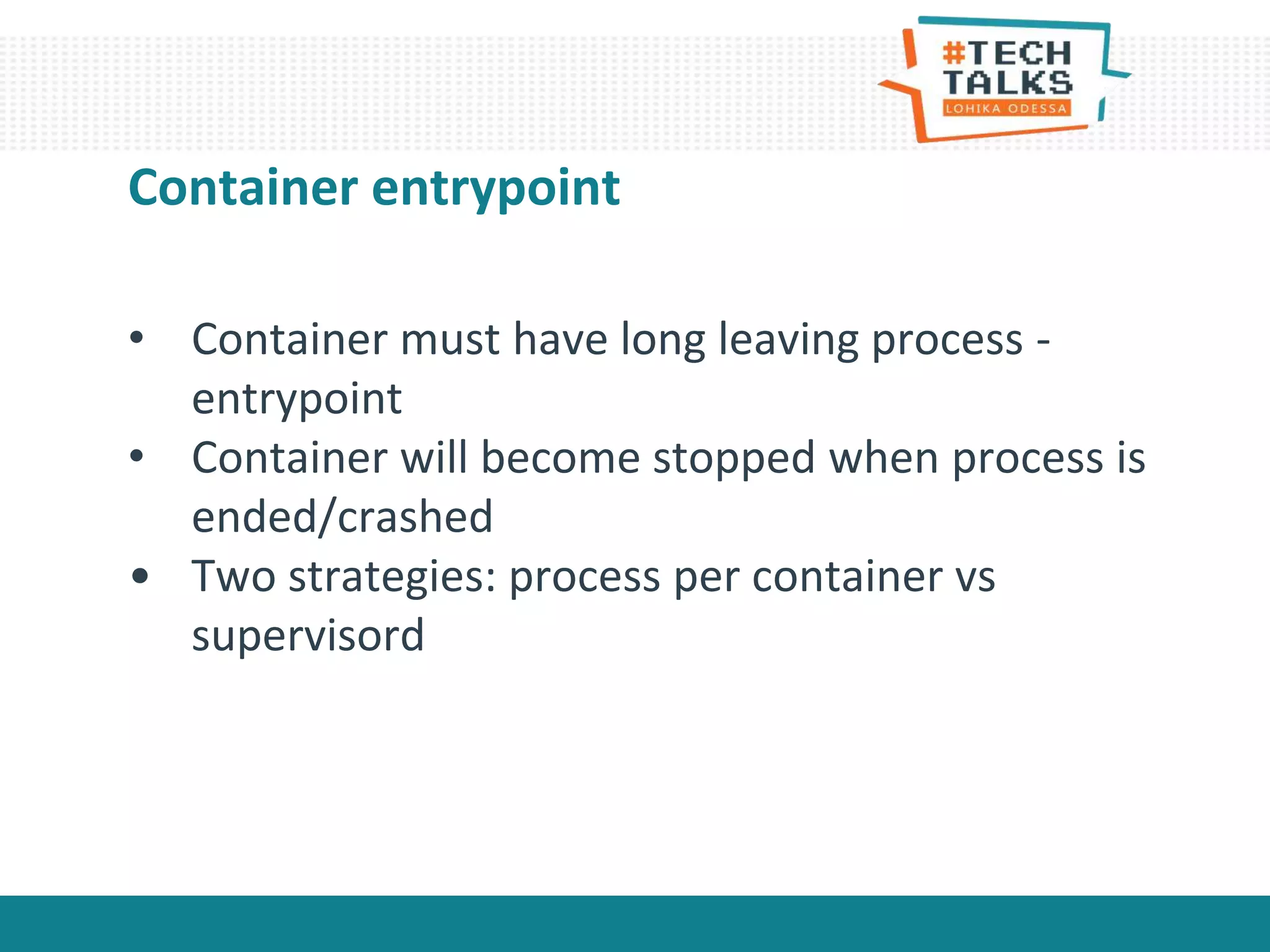
![Supervisord configuration
[supervisord]
nodaemon = true
logfile = /var/log/supervisord.log
[program:hadoop-hdfs-namenode]
command = /etc/init.d/hadoop-hdfs-namenode start
[program:mesos-master]
command = /usr/local/sbin/mesos-master --work_dir=/mnt/mesos-work --
hostname={{ MESOS_HOSTNAME }} --log_dir=/var/log/mesos
[program:vw-spanning-tree]
command = /usr/local/bin/spanning_tree](https://image.slidesharecdn.com/dockerpresentation1-150723080509-lva1-app6892/75/Docker-based-Architecture-by-Denys-Serdiuk-18-2048.jpg)
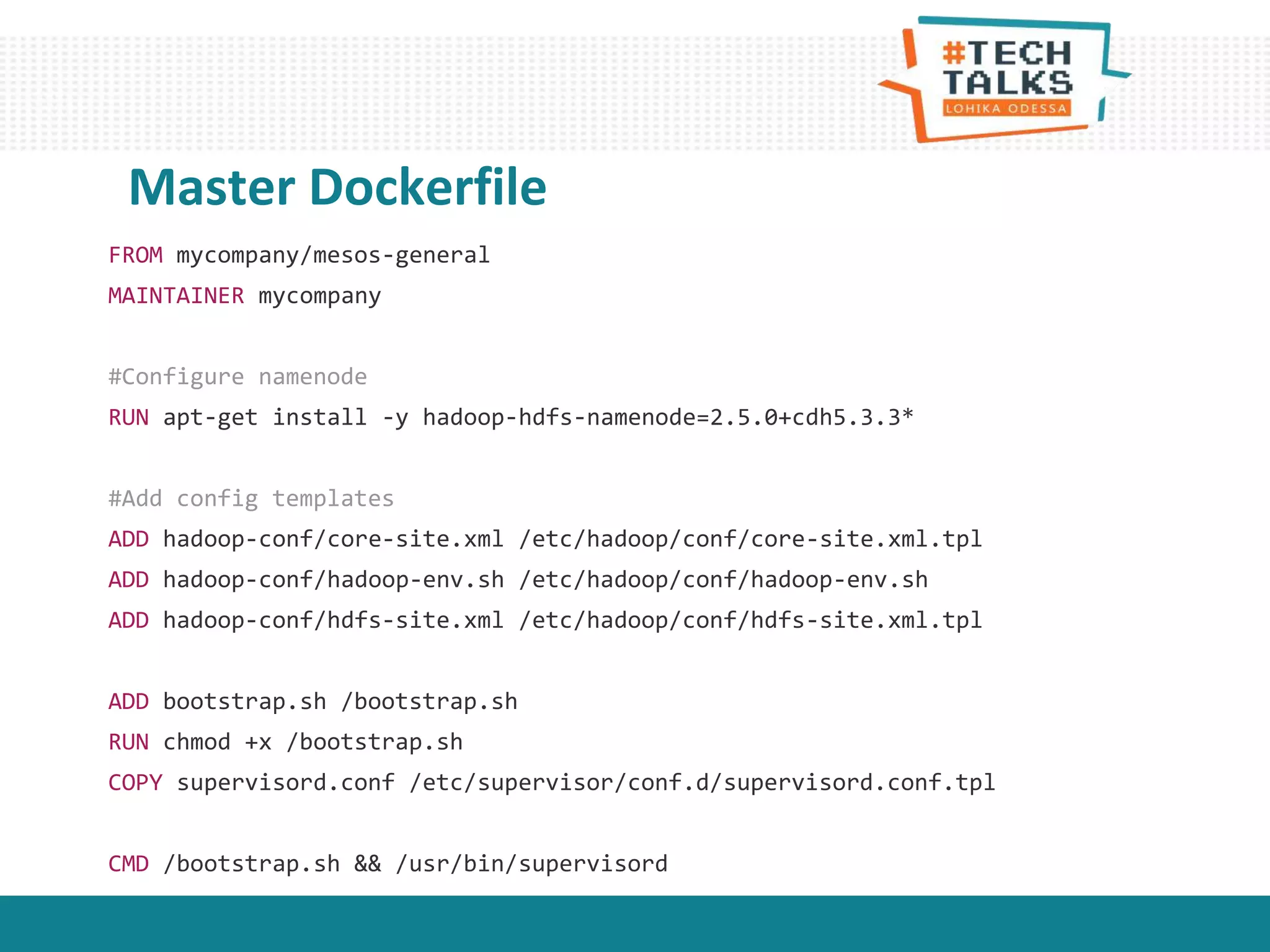
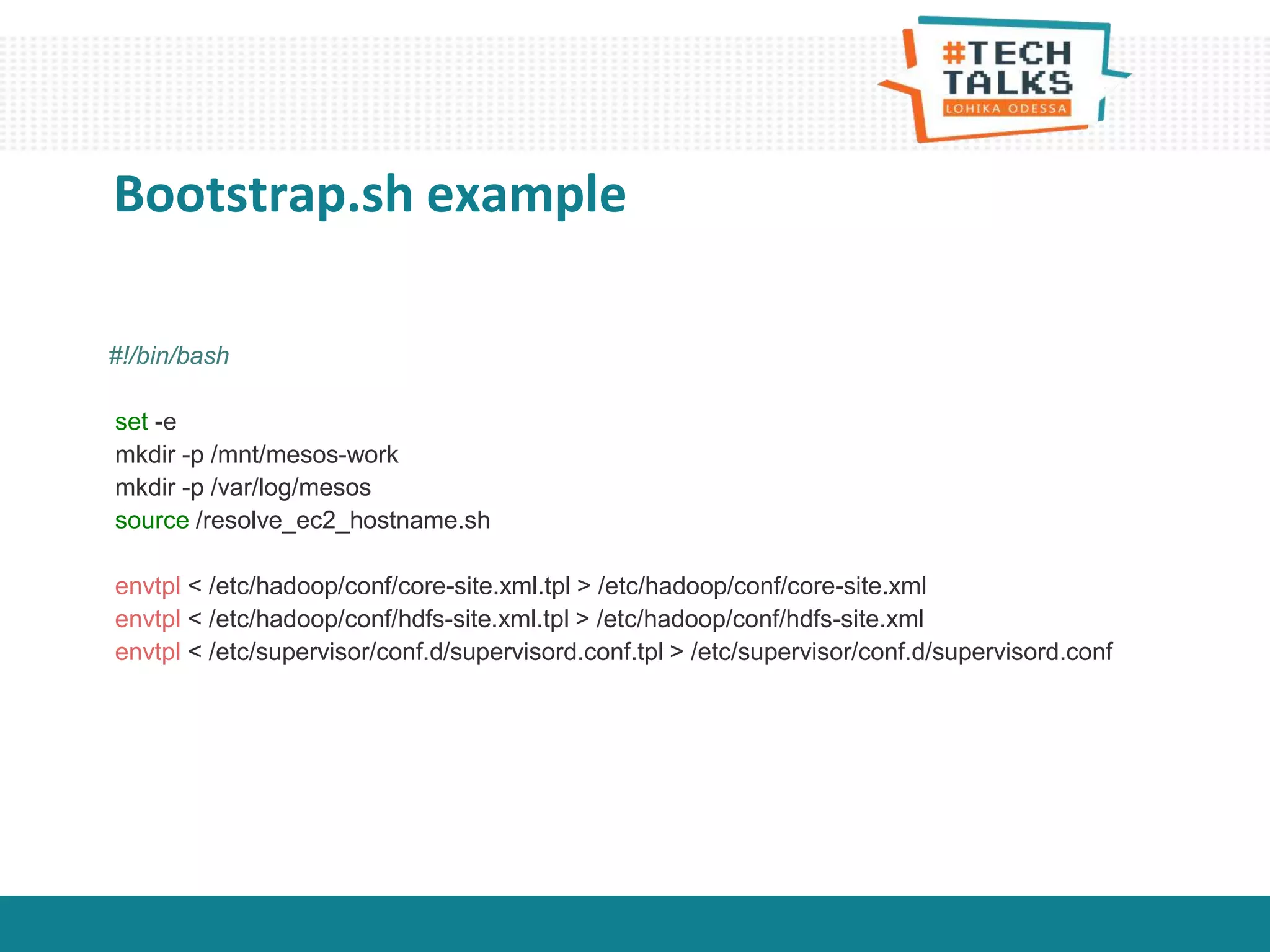
![• Container identification (--name)
• Network settings
o --net = [none, bridge (default), host, container:<name|id>]
o -P vs -p
o --link
• Useful options for debug/testing
o --rm=true, -it
o docker exec -it running_container_name bash
• Env variables
• Runtime constraints on CPU and memory
Run options](https://image.slidesharecdn.com/dockerpresentation1-150723080509-lva1-app6892/75/Docker-based-Architecture-by-Denys-Serdiuk-21-2048.jpg)
